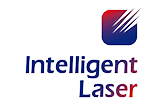The concept of weld seam tracking system
The welding seam tracking sensor mainly consists of a CCD camera, a semiconductor laser, a laser protection lens, a splash-proof baffle, and a wind cooling device. By using the principle of triangulation, the coordinate information of each point in the laser scanning area is obtained, and the online real-time detection of common welding seams is realized through complex program algorithms, and the robot is guided to adjust the working trajectory according to the scanning data.
Manual or semi-automatic welding relies on the judgment of welding workers and the adjustment of process parameters to complete the tracking of welding seams. After the industrial robot is equipped with a weld seam tracking system, the equipment can calculate the error between the detected weld seam and the robot teaching trajectory through the sensor, and output error data, which is then corrected in real-time by the motion execution mechanism to accurately guide the welding gun to perform automatic welding. This is like giving the robot eyes.
For fully automated welding equipment such as robots or automatic welding machines, they mostly rely on the robot's teaching programming and trajectory reproduction to work, so it is necessary to ensure the accuracy of the workpiece and its assembly to ensure that the welding gun can align the welding seam within the allowed precision range of the process.
However, in many cases, the accuracy and consistency of the workpiece and its assembly cannot meet the requirements of large-scale workpieces or mass production of automated welding. At the same time, during the welding process, there are uncontrollable effects of stresses and deformations caused by overheating of the workpiece. Therefore, once encountering these situations, there is a need for an active tracking device to perform operations similar to the eyes and hands of manual welding workers, that is, the weld seam tracking system guides the equipment to work.
The principle of laser weld seam tracking
The laser weld seam tracking sensor adopts a laser triangulation reflection principle, that is, the laser beam is amplified to form a laser line projected onto the surface of the object to be measured. The reflected light passes through a high-quality optical system and is projected onto the imaging matrix to obtain the distance from the sensor to the surface of the measured object (Z axis) and the orientation information along the laser line (X axis) by calculation. Moving the measured object or the contour gauge probe can obtain a set of three-dimensional measurement values.
The obtained information can be used for welding seam searching and positioning, weld seam tracking, adaptive welding parameter control, weld seam forming inspection, and real-time transmission of information to the mechanical arm unit to complete various complex welding and prevent welding quality errors, achieving unmanned welding.
The development and prospect of weld seam tracking
The weld seam tracker can be said to be a great invention for welding. With the development of technology, achieving welding automation and intelligence has become an inevitable trend.
In the next few years, not only technology upgrades are needed for laser weld seam tracking, but also in terms of usage expansion, it is necessary to deepen the understanding of customer usage, meet user needs, and improve products.
